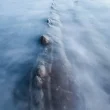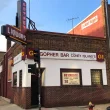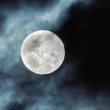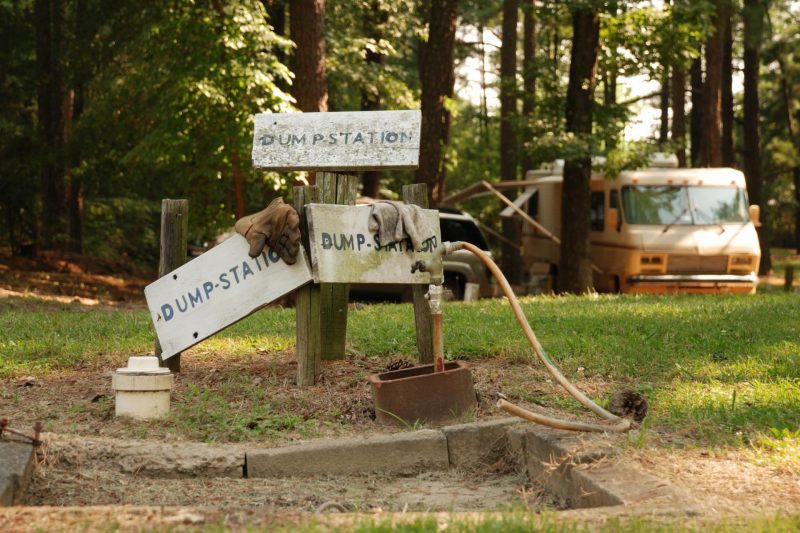Camp trips have always been a great way to spend time with family and friends while exploring the outdoors. And what better place to discover Mother Nature’s amazing landscapes and wildlife than in our national parks?
But don’t count on setting up your tent or RV in these gems, hoping to wake up in pristine natural environments. It seems camping in our nation’s most protected destinations no longer has the allure it once garnered.

National Park Camping Is Becoming Less Popular
From 1872 to present day, the United States has created national parks to preserve the natural and historical aspects of lands around the country.
The National Park Service (NPS) was created in 1916. It oversees all of our 63 national parks, welcoming visitors who continually increase in number.
Over the last decade, however, the amount of traffic through many of these expanses has exploded. That has made it difficult for anyone to peacefully explore these protected areas as they were originally meant to be.
With crowds, noise, increasing fees, and scheduled visitations, national park camping is quickly becoming a thing of the past. It’s almost impossible these days to find a campground within a park that doesn’t require advanced reservations.
Even then, all sites are taken within hours of availability. So it’s easy to see why camping within our nation’s most treasured preserves has lessened in popularity.
HOT TIP
Here’s why you should skip visiting Yellowstone this year.
5 Reasons Why Camping in a National Park Is a Dying Pastime
For many, the hassles of national park camping have become more pronounced, making it less desirable. Here are a few reasons they no longer wish to set up camp inside favored parks.
Increased Entry Restrictions
More popular parks like Arches National Park and Zion have begun limiting access to visitors by scheduling entry during their high seasons. Travelers must apply for a “timed-entry ticket” online or by phone before their planned trip to participating parks.
This tactic aims to control congestion on the roads and trails to provide a better experience for all visitors.
It has also cut down on the number of people entering the park, as most parks have a contracted hourly schedule. For instance, Arches only allows timed entry from 6 a.m. to 5 p.m., from April through September.

High Cost to Camp
Camp fees and park entry fees have increased exponentially as the number of park visitors increases. It’s the law of supply and demand. More visitors want to come, but the prices have limited some budget-oriented travelers.
Plus, they’re not making any more campsites, so demand is at an all-time high. These campgrounds can increase prices yet have no problem finding campers who will pay them.
Overwhelming Crowds
Crowds are the big problem with popular national parks like Yellowstone, Glacier, and Yosemite. This not only causes road and trail congestion, but it also takes away many of the reasons visitors enjoy the parks.
It’s harder to find hiking trails and attractions not inundated with people. Waiting for Old Faithful to erupt is like going to a professional sporting match with thousands in attendance.
What used to be a quiet yet challenging hike with a few others to Angel Landing to absorb breathtaking views has turned into a competition. And frustrations erupt when waiting in line to drive Going-to-the-Sun Road, only to find your RV is one foot too long to make the trek.
Backcountry experiences to get away from everybody and soak in the tranquility and beauty are disappearing quickly.

HOT TAKE
They might be beautiful, but if we’re being honest, the Smoky Mountains are overrated.
Reservations Are Hard to Get
Campsite reservations for most national park campgrounds are handled through Recreation.gov, which opens up campsites six months before the arrival date.
With smaller campgrounds, these spaces disappear almost immediately during the park’s high season. That makes it extremely difficult to secure a campsite.

Alternatives Are Easy to Find
Because so many national parks have become popular tourist destinations, private campgrounds have set up shop within driving distance. This gives campers many options to the over-congested park campgrounds.
Others choose dispersed campsites in nearby national forests or on BLM land. And some travelers have given up attempting a national park visit altogether, opting for state parks and private attractions that may be less populated but just as enticing.
A look at websites like Campendium.com or FreeCampsites.net provides numerous alternatives to visitors who yearn for quieter, nature-filled locations.
Can You Camp Outside of National Parks?
Even with the influx of RVs on the road today, there are still so many places to set up camp outside the boundaries of a national park. These might be in public or private campgrounds, state or county parks, and dispersed camping areas. They may even be within camping membership groups like Harvest Hosts or Boondockers Welcome.
Don’t let the lack of campsites available in your favorite national park, monument, or preserve keep you from exploring our nation’s most desirable assets.

Is National Park Camping Coming to an End?
It may be quite a challenge to secure a campsite within a national park for various reasons like those listed above. But one thing is certain — national park camping will always be around.
There will be campers willing to pay the price, wait in line, and put up with crowds with some of America’s most beautiful scenery surrounding them.
When was the last time you camped in a national park?
If You Want the Latest Travel News, Join Our Mailing List
Don’t rely on biased RV industry news sources to keep you informed. Stick with Nomadic News. We publish articles and breaking stories that matter to you every weekday.










